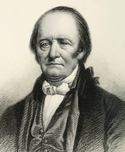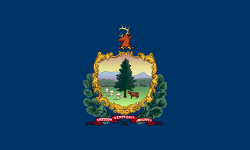Thomas Chittenden

Thomas Chittenden, född 6 januari 1730 i East Guilford (nuvarande Madison), Connecticut, död 25 augusti 1797 i Williston, Vermont, var en nordamerikansk politiker. Han var Republiken Vermonts statschef 1778–1789 och 1790–1791. Efter att ha tjänstgjort som Republiken Vermonts guvernör fortsatte han som den första guvernören i delstaten Vermont från 1791 fram till sin död.
Chittenden flyttade 1774 till Williston. Han var med om att förhandla med kontinentala kongressen om möjligheten för Vermont att gå med i Amerikas förenta stater. Ärendet bordlades i och med att både New York och New Hampshire hade krav gällande Vermonts territorium. Detta ledde till grundandet av den självständiga staten Republiken Vermont år 1777. Chittenden tillträdde 1778 som statschef med titeln guvernör. Han efterträddes 1789 av Moses Robinson. Chittenden tillträdde 1790 på nytt som statschef och valdes till den första guvernören i delstaten Vermont då USA godkände Vermont som delstat år 1791 och den självständiga republiken upphörde att existera. Guvernör Chittenden avled 1797 i ämbetet och efterträddes av Paul Brigham.
Chittenden gravsattes på Old Williston Cemetery i Williston. Sonen Martin Chittenden var guvernör i Vermont 1813–1817.
Externa länkar
- Biografi på National Governors Associations webbplats
- Political Graveyard
- Thomas Chittendens grav på Find A Grave (engelska)
| |||||||
|
Media som används på denna webbplats
Official portrait of Thomas Chittenden, leader and founder of the Vermont Republic and later the first Governor of the State of Vermont. No contemporary likeness of his image is known to exist; this portrait may have been drawn sometime after 1847 by Vermont artist B.F. Mason, who was hired by the state to copy an image of Chittenden as well as Ethan Allen, in the event such an "authentic likeness" could be obtained.[1] In the portrait's source material, credit is given to his 2nd-great-grandson the Hon. Lucius E. Chittenden of New York City, and one David Read of Burlington, VT.[2] There are a number of rumors as to the origins of the portrait, with some stating the image was made from descriptions of Chittenden's children, whereas others believe one of Chittenden's grandsons served as its model.[3][4]

